FALL MULLET RUN
GET IN ON THE ACTION!
by Paul MacInnis
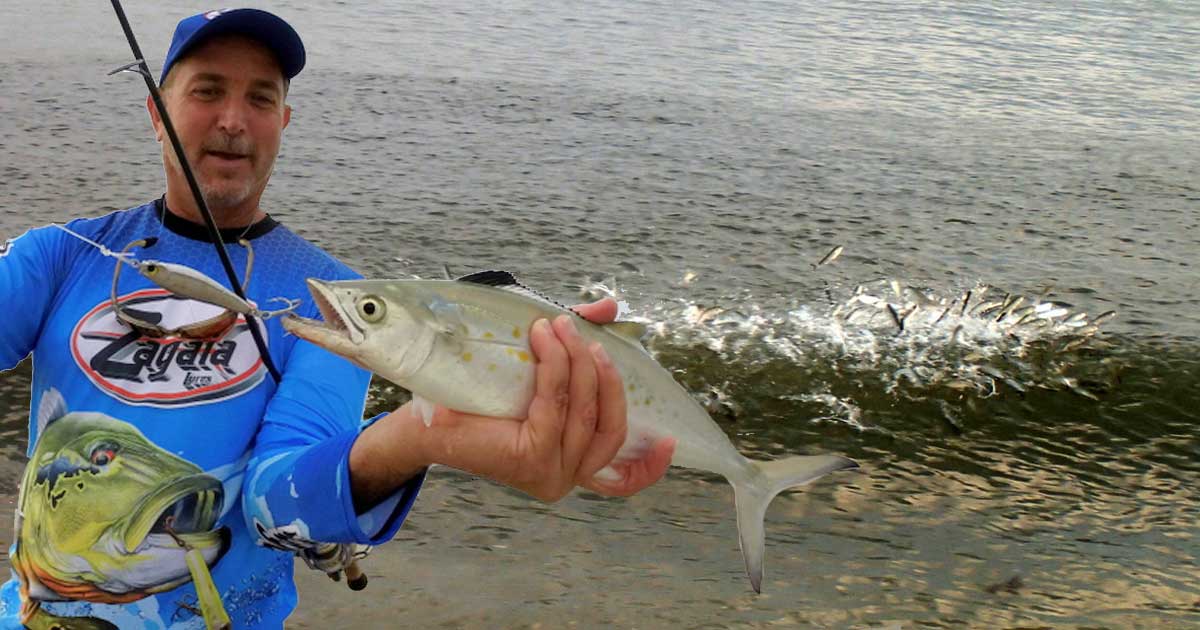
Author Paul MacInnis catches a Spanish mackerel as the mullet migrate along the beach.
BELIEVE THE MULLET RUN HYPE!
I’ve written many articles over the years about the fall mullet run. I’ve used terms like frenzy, blitz, mayhem and frenetic to describe the fishing. Those are all good descriptors and are no exaggeration. Hit it when the run is going off and your tackle will be in tatters and you’ll have sore arms and hands from fighting and unhooking so many fish. Hit it when the run is not going off and you can still have a pretty good day.
The run is a mass migration of mullet, from fingerlings to full grown adults. They exit estuaries to the north and make their way south to winter over in the warm waters of south Florida. It’s already started. I saw schools running the beach over Labor Day weekend. The run really kicks up steam around mid-September and remains strong throughout October. Along the Space Coast, the migration may trickle out around Halloween, but on good years, the mullet supply and good fishing remain through Thanksgiving. Most of the mullet are running south along the beach. Schools get bunched up around Port Canaveral and Sebastian Inlet, and some mullet cut through the inlets and make their way south through our lagoons.
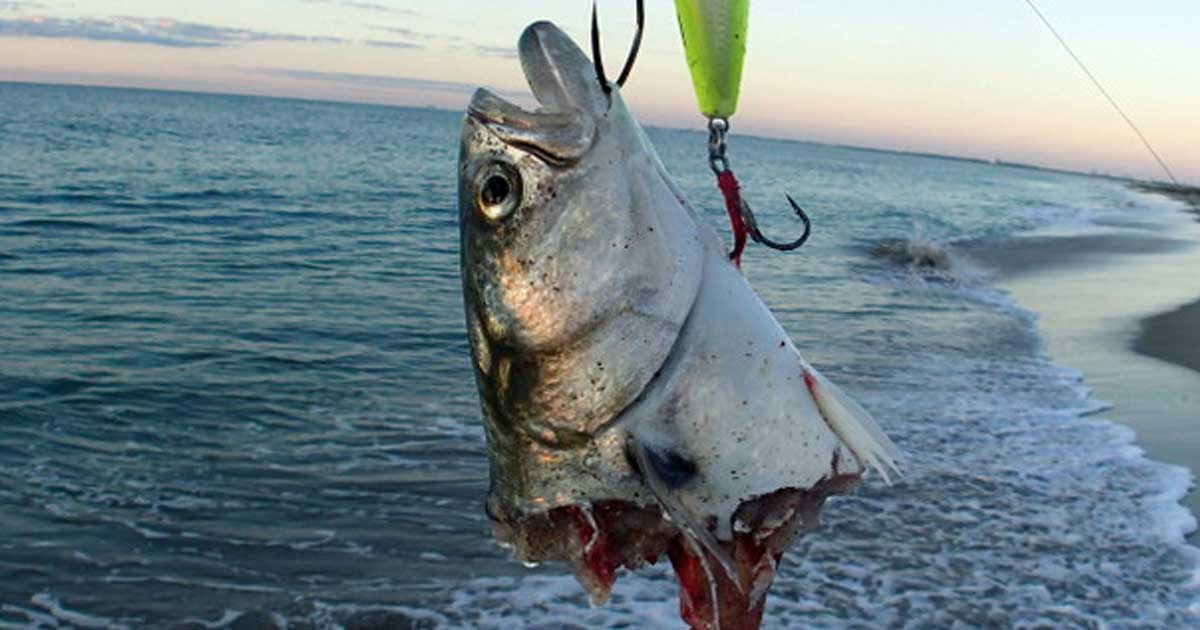
There’s no shortage of big fish taking part in the migratory mullet feast.
WHAT SPECIES TO TARGET
The migration is a massive moving buffet that attracts every predator with a taste for mullet. Bluefish, jack crevalle, Spanish mackerel and the biggest ladyfish of the year can be thick in the surf and inlets and offer almost non-stop action on lures and bait. Snook, redfish, seatrout and flounder will prowl the first trough off the beach, the jetties and seawalls of Port Canaveral, and throughout the inlet at Sebastian. Bigger predators join the fray. This is the best time of year to tangle with a monster tarpon in the surf. Tarpon generally hang around until the first cold fronts of October push them south. Sharks of all sizes can be unnervingly plentiful off the beach and will not hesitate to attack any fish you hook.

The author scores a hard-fighting bluefish from the surf.
BAITING UP
Using a live finger mullet is almost a no-brainer during the mullet run. A standard fish finder rig works great. A good setup is about two feet of 50 pound test mono or fluorocarbon leader with a 2/0 to 5/0 Daiichi D84Z circle hook tied to one end and a stout barrel swivel tied to the other end. Run your main line through a 1/2 to 1 ounce egg sinker and tie your line to the swivel. Use just enough weight to keep your bait on the bottom. In the surf this rig will roll around and move which is what some of us want. If you are one of the folks who like to keep their baits in one spot, swap out the egg sinker for a pyramid or Sputnik sinker that is attached to the line using a Team Catfish TCSS6 sinker slide.
If you want to target tarpon, try free lining a full grown mullet on a 9/0 to 10/0 Daiichi D72Z circle hook with a 60 to 80 pound test mono or fluorocarbon leader. The same hooks work for sharks, but you will need a few feet of wire leader. I use #9 single strand stainless steel wire. Pin the hook through the corner of a big chunk of freshly caught bluefish, jack or ladyfish and you shouldn’t have to wait long for a hit.
All this being said, I rarely fish bait during the mullet run because tossing lures is so much fun. Just about any lure that remotely resembles a mullet will get bit. Just make sure the lure is built tough as mullet run fishing can be brutal on lures. Plugs designed for bass and seatrout will get plenty of hits around the mullet pods, but unless you are using light tackle, they may very well result in lost fish due to straightened hooks, or even worse, the hooks pulling completely out of the lure.
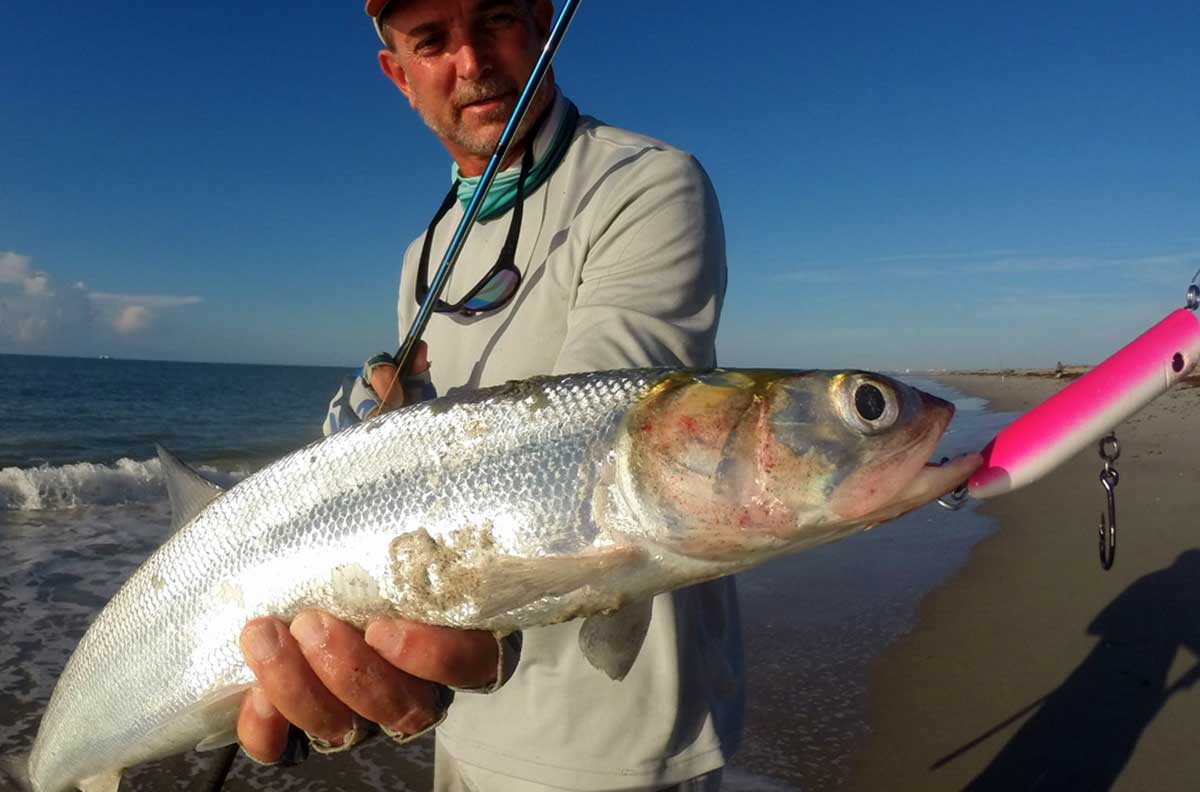
Ladyfish, the poor man’s tarpon, is always a fun fight.
TOPWATER
Topwater is the most fun and provokes some incredible hits that will have you yelling to your buddies, “did you see that?!?!” I like plugs like the Super Spook XT, Williamson Surface Pro, Bass Pro Shops Offshore Angler Pencil Popper, and the Oden Lures 1.5 ounce Frigg Popper. The Offshore Angler plug is the cheapest, but you’ll have to swap out its wimpy hooks with something stout like 2/0 Daiichi 7x D98Q treble hook. The Frigg Popper is pretty unique. It has a little cavity in the front that you can fill with a thick, gel like fish attractant (Oden makes one called Fish Smack). Scent leaches out gill slits on the side of the lure. That scent will provoke some incredible strikes from blacktip and spinner sharks.
SUBSURFACE PLUGS
Subsurface plugs like the Yo-Zuri Mag Darter, Daiwa Salt Pro Minnow Bullet and Rapala X-Rap Long Cast Shallow work well when the topwater bite slows down. I also switch to these baits when there are a lot of tarpon around as they seem to prefer something that swims just below the surface.
SPOONS
Spoons are popular in the surf. They cast long distances and track well in rough water. I like slab style spoons in the one to three ounce range like the Hopkins, Crippled Herring and Kastmaster. I also like to keep a light spinning rod handy with a ¼ ounce spoon in case a Spanish mackerel feeding frenzy suddenly erupts.
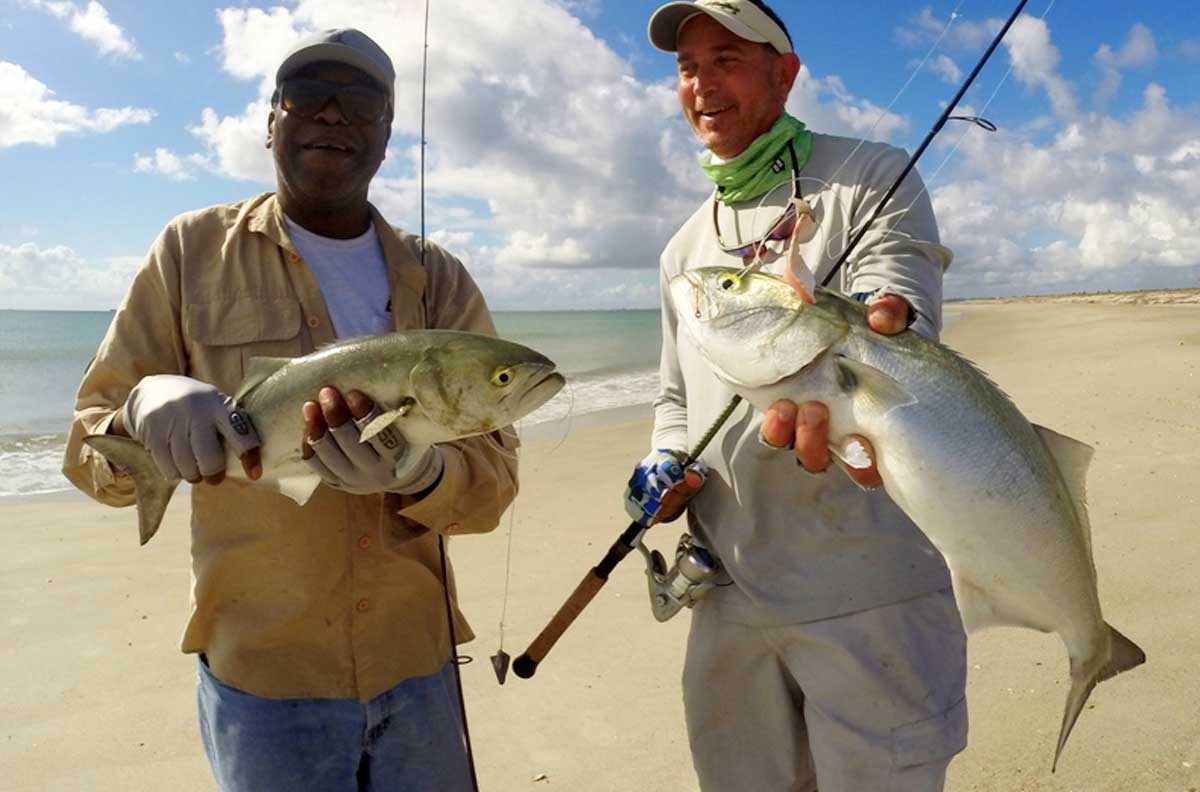
Doubling up on blues in the surf!
JIGS
Jigs, like a three inch D.O.A. C.A.L. Shad Tail threaded onto a ¼ or 3/8 ounce jig head work well when bounced along the bottom of the first trough off the beach or when worked around the jetties at the inlets. These are pretty effective on snook, redfish and flounder, but if there are a lot of bluefish around, they’ll shred up you supply of jig tails in no time.
RODS & REELS
The same rods and reels you use for seatrout and redfish in the lagoons will work for most of the fish you encounter during the mullet run, but if you want a decent shot at landing a shark, tarpon or the bigger snook and redfish then you need to up your tackle. I use 30 pound test Platypus Platinum Braid on 6000 – 7000 sized reels. Some folks think that is a little light and opt for 40 or 50 pound braid. I mount my 30 pound reels on nine foot Okuma Cedros CSX-S-902MH surf rods. For casting jigs in the first trough and throwing small spoons to mackerel I like 20 pound Platypus braid on a 4000 reel on a seven foot medium fast action Cadence CR5-701S-MF rod.
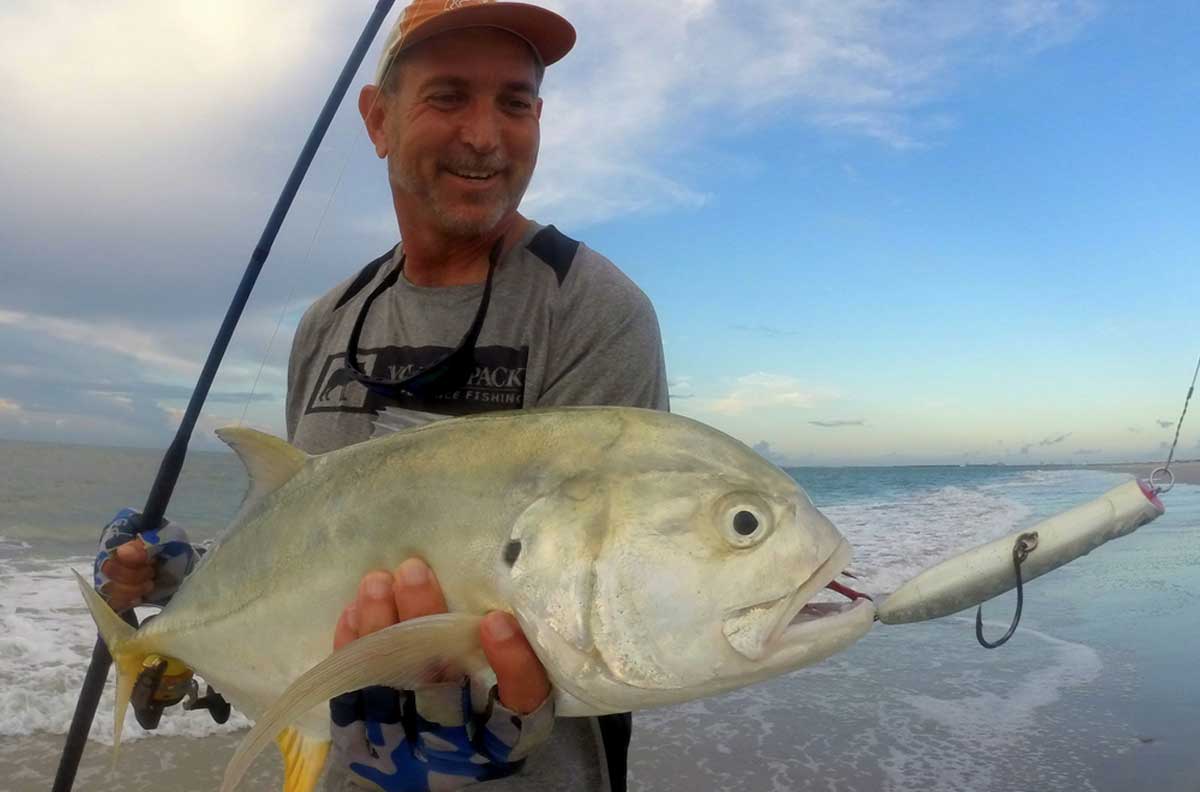
Jacks are among the many species chasing the migratory bait pods in the surf.
HOW DO YOU FISH THE MULLET RUN?
If you ask ten mullet run regulars how they fish, you’ll probably get ten different answers. That is the beauty of the migration. Fish are often plentiful and aggressive and lots of different baits and techniques will work. I urge you to get out and fish the mullet run yourself, experiment a bit and find out what works best for you.
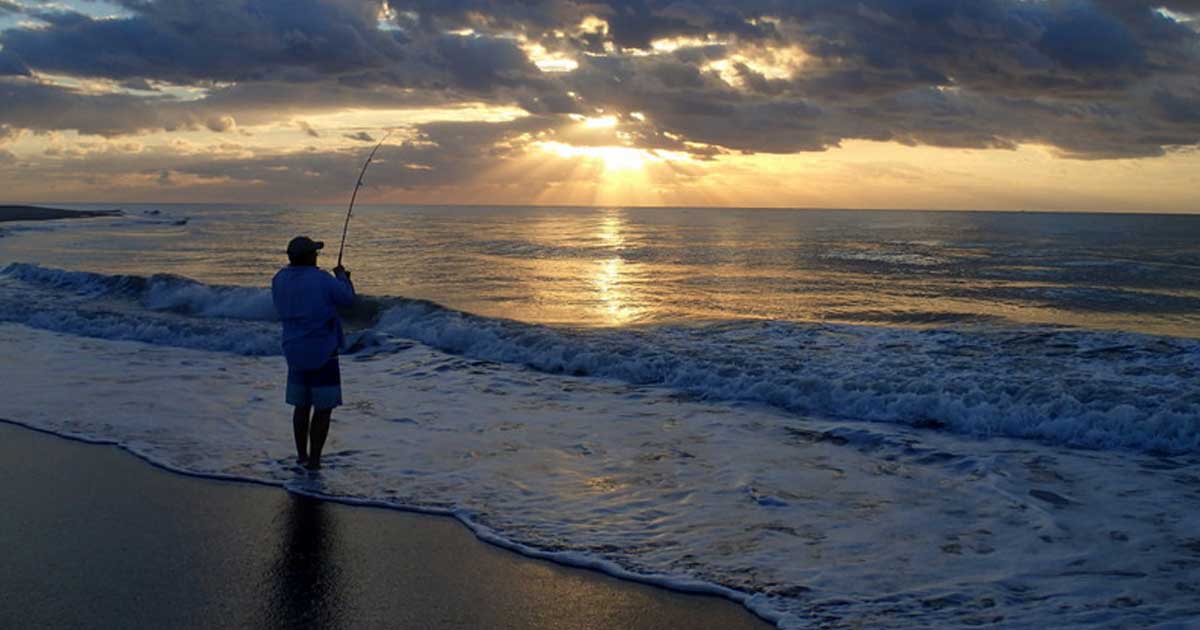
There’s NO wrong way to fish Florida’s fall mullet run!




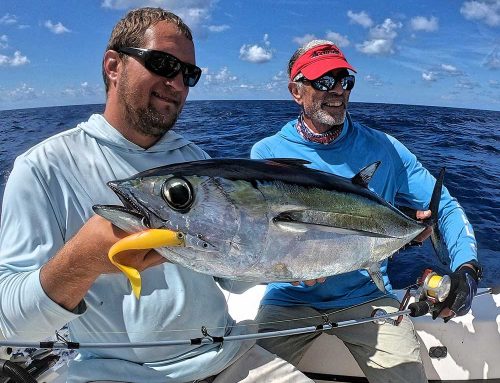
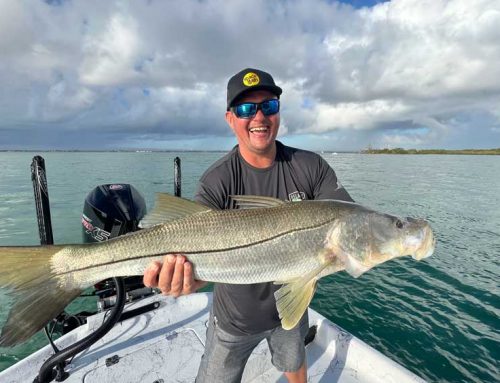


Great article thanks!
great job love reading about mullet run .just like a frenzy for fish
Great info God Bless
Thanks for posting this … those of us just getting into the SaltLife appreciate it. Like the specifics you’ve included. Helps greatly, instead of us going to the tackle shop and staring at the endless options.